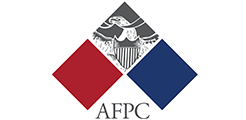Russia to Strip Abkhazia and South Ossetia of their Limited Sovereignty
By Valeriy Dzutsev (03/18/2015 issue of the CACI Analyst)
Russia has moved to sign an agreement with South Ossetia, emulating a similar, earlier agreement with Abkhazia. Moscow proposes to eliminate border controls with the two de facto states and essentially annex them in exchange for financial incentives. Despite their inherent weakness, political forces exist in both territories that oppose covert annexation to their large neighbor. Most recently, South Ossetia’s parliament and government clashed over how closely the territory should integrate with Russia. Authorities in Abkhazia and South Ossetia seek to reassure their disgruntled citizens that their countries will retain sovereignty although this aim now appears more illusory than ever.
Armenia’s Ruling Party Consolidates Power
By Armen Grigoryan (03/18/2015 issue of the CACI Analyst)
Armenia’s parliamentary opposition suffered a serious blow as the government managed to disrupt the cooperation that the Prosperous Armenia Party (PAP) and the Armenian National Congress (ANC) had built since 2011. Further atomization of the opposition and consolidation of the regime has become more likely. The regime can also strengthen its position in the context of a protracted dispute with Turkey concerning the Armenian genocide in the Ottoman Empire and its consequences. As a concomitant result, no compromise leading to a breakthrough in negotiations on the Nagorno-Karabakh issue should be expected.
Kazakhstan and the EEU
By Dmitry Shlapentokh (03/04/2015 issue of the CACI Analyst)
January 2015 marked the beginning of a new relationship between Russia, Kazakhstan and Belarus bound together by the Eurasian Economic Union (EEU). Yet the emerging friction between Astana and Moscow indicates the pitfalls of the EEU as a project, at least as conceptualized by the Kremlin. In August 2014, Kazakhstan’s and Russia’s leaderships engaged in an exchange of cold remarks. Through late fall (October-November 2014), Russian politicians and journalists discussed the suffering of Russians in Northern Kazakhstan and Russia’s responsibility for their situation. As the EEU was finally inaugurated, economic and geopolitical tensions between Astana and Moscow continued, indicating the EEU’s economic and geopolitical instability.
U.S. New Silk Road Initiative Needs Urgent Renewal
By Richard Weitz (03/04/2015 issue of the CACI Analyst)
Despite the drawdown of U.S. military forces in Afghanistan, the withdrawal of U.S. forces from Central Asia, and a preoccupation with developments in East Asia and the Middle East, the Obama administration continues to affirm support for promoting the economic integration of South and Central Asia through its New Silk Road initiative. Launched soon after the administration assumed office, the policy seeks to promote regional trade and transit, improve customs and border flows, and deepen business and popular ties among these countries in order to promote peace and prosperity. But the administration must take urgent action to renew the project and achieve its worthy objectives.


